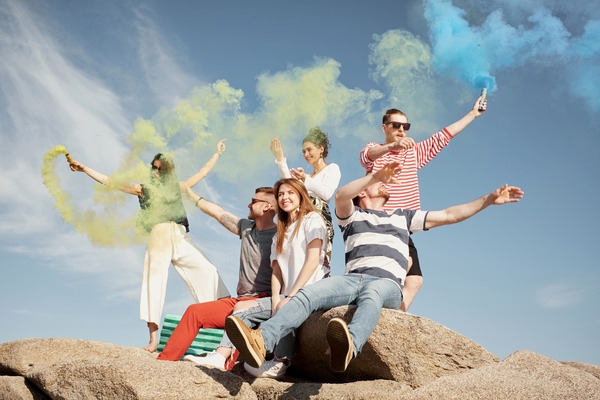Article explaining why helping behaviors occur.

A long time ago I lived one of those endearing situations in which one spends a few minutes thinking about how and why we react the way we do. It was rush hour on a city bus in southern Spain. The heat and the people made an uncomfortable combination for a long journey. As we got closer to the center, the bus filled up and there was no room for everyone.
In front of me was an elderly woman, holding several shopping bags and with a certain tired expression, to whom I offered my seat. From that very moment and as if it were chips, the domino effect began to emerge: all the young people who had gotten on at the first stops and had a seat, gave up their place to the older people who remained standing. . Why this chain reaction?
I begin by launching a hypothesis into the air starting from the most primitive element to its most evolved implication: imitation as a source of knowledge. We come into the world willing to learn from what surrounds us, everything that is useful to us, and the reference of our peers works something like the road map that guides us.
What is the domino effect?
By imitating we learn what we do not know how to do on our own, but it also works as a powerful identity seal that protects us from our own questioning. The weight of the decision falls on the majority, the discrepancy is diluted when the group appears and in the groups we find the refuge of our individuality. But we do not imitate arbitrary way only what we identify with, as in this case it could be a helpful behavior and that also gives us an image of ourselves that reaffirms us.
We do an important part of imitation through similarity, from the most obvious to the most symbolic: with those of our gender, with those of our race, with those of our land, with those of our social condition… with our age group: young people imitating young people. Thus, social consensus, sharing ideas or attitudes with others helps us feel that we belong and that we are supported. That is why we join groups of all kinds (reading, political, religious, leisure) and without realizing it we also join those that form spontaneously in our daily lives: the group of those who complain. in the line at the bank, those who get excited in a movie theater, those who get cold to smoke outside a bar, those who get up on the bus with knowing looks.

And we invariably belong to our context, which is not foreign to us, which infects us. In the same way that several people can start running without knowing where or why when faced with an alarm signal in the so-called “”mass hysteria ”, also when it comes to prosocial behaviors, what others do affects us: observe how the fate of the artists who play music to the customers on the terrace of a bar is conditioned depending on the generosity with which they Respond first to those who approach.
And when it comes to helping, even in this insignificant portion that is shown to us scope of everyday life it is worth rescuing the paradigmatic theory of diffusion of responsibility: the more witnesses who witness an emergency situation, the less likely it is that we will take responsibility for what we have to do individually, because the responsibility we feel is distributed proportionally to the spectators.
Surely that is why in the big cities We are better able to ignore what others need from us. Maybe that’s why the same thing doesn’t happen in smaller towns. Perhaps a smaller space places us in the necessary place of prominence in the context that includes us: a classroom, a supermarket, a store… a bus. Whatever the reason, the fact is that that impersonal atmosphere of any transportation became an experience of mutual consideration and what until then had been an ordinary day became a scene worth remembering.








